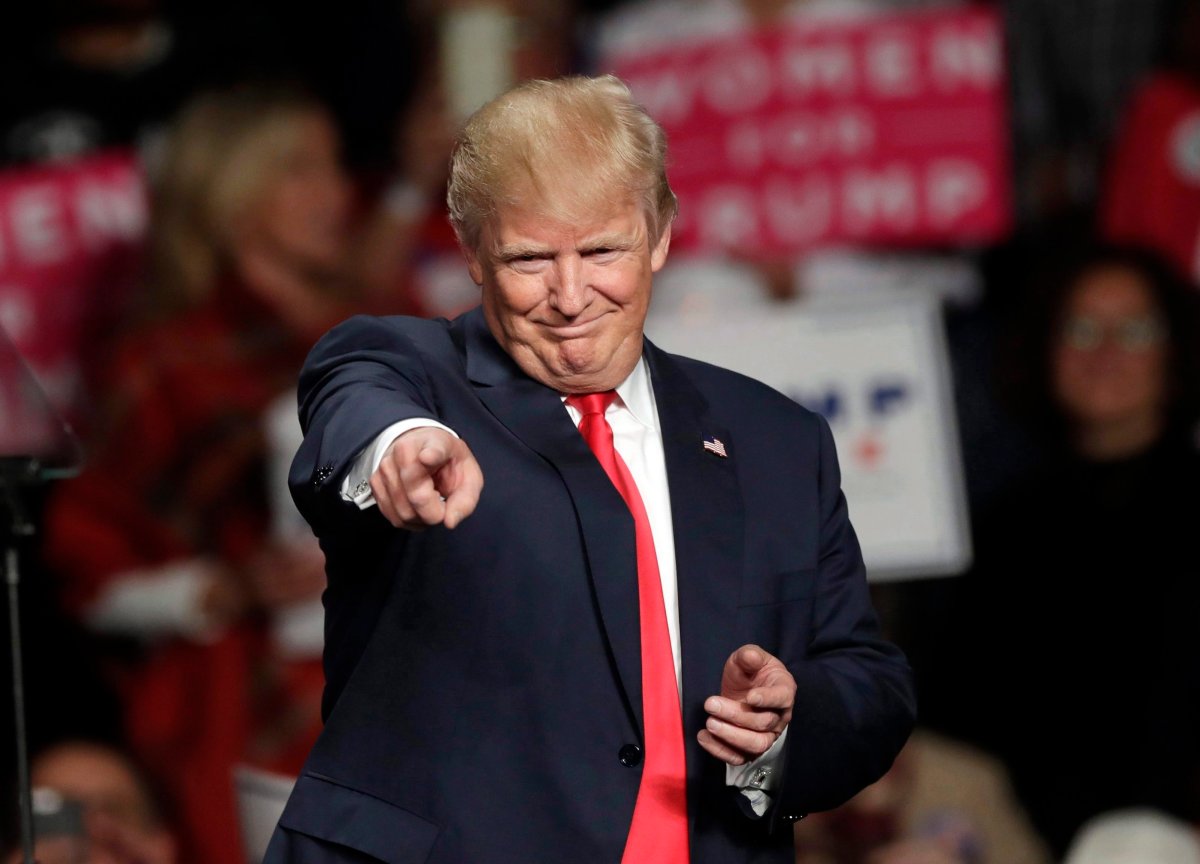Donald Trump has burst with pride since he won the U.S. presidential election last November.

He was so proud of his Electoral College victory, which he took with an initial count of 306 votes to Hillary Clinton’s 232, that he distributed copies of an election map to Reuters reporters in April.
Trump has also highlighted his achievement by noting that it’s more difficult for Republicans to win the Electoral College.
He did this in December, just after his Electoral College win was confirmed with a tally of 304 votes to Clinton’s 227.
And he said it again in April.
But is he right about that? Yes and no, if you ask one law professor.
And if you ask an expert in the system, he’ll tell you that the Electoral College helps to ensure fair and competitive elections.
The Electoral College gives every state as many votes as it has representatives and senators in Congress, according to the U.S. House of Representatives.
The number of seats in the House of Representatives is determined proportionally, by population, while every state has two senators.
Take California, for example. It has 53 seats in the House, and two in the Senate, giving it a total of 55 Electoral College votes.
Wyoming, meanwhile, has one representative and two senators, giving it three Electoral College votes.
Once elections are finished, electors in each state meet and cast their ballots for president and vice-president — and usually for the candidate who received a plurality in the state.
READ MORE: Donald Trump records Electoral College win despite protests across U.S.
The system was designed as part of the “Great Compromise,” an agreement reached in 1787 that decided how Americans would be represented at a congressional level, Gary Gregg, a University of Louisville professor, told Global News.
It was an agreement that convinced all U.S. states to join the union, as it gave each state, including ones with smaller populations, two electoral votes to account for their senators.

It’s a system that, as it functions now, “gives us good competitive elections requiring the winner to speak to both bigger and smaller states, achieve both some rural and urban votes,” Gregg told Global News.
The last few elections have shown that the Electoral College system supports “competitive elections that can be won by both candidates and both parties,” he added, noting Republican and Democratic victories over the past 13 years.
READ MORE: Why pleas to stop Donald Trump won’t change the votes of Electoral College members
But not everyone feels the way Gregg does.
Shortly after Trump won the election, David S. Cohen, a professor at Drexel University’s Thomas R. Kline School of Law, wrote in Rolling Stone that “The Electoral College rigged the election for Donald Trump.”
He argued that the system, at this point in history, “tilts the playing field in favour of candidates who appeal to low-population states and a small set of contested ‘swing’ states.

Cohen did some math comparing the number of Electoral College votes in California vs. Wyoming.
He noted that, with 55 Electoral College votes, California has one per 670,000 people.
READ MORE: Results of the 2016 U.S. election
Meanwhile, Wyoming has three Electoral College votes with a smaller population, enough that there’s one for every 186,000 people — giving it “four times the power” of people in California in this system, he wrote.
Trump did better in a number of states with lower populations — like Wyoming, where he won just over 70 per cent of the vote.
Ergo, the Electoral College is “structurally tilted toward the Republicans in that it gives outsized influence to the small states,” Cohen told Global News in an email.
But Trump is right in one sense, he added — the Democrats have the edge in high-population states such as California and New York, giving them a line on a hefty number of Electoral College votes.
However, just because there are more Democratic voters doesn’t mean that the system gives the party an outright advantage.
“It doesn’t tilt toward the Democrats as much as pure democracy should tilt in their favour because the Electoral College structurally tilts toward the Republicans,” Cohen said.
“Best proof of this? Of the elections since 2000, Democrats have won the popular vote four times out of five, but have only won two of those elections.
“Why? Because the Democrats get more votes but the Electoral College’s structure helps Republicans.”
READ MORE: Hillary Clinton wins popular vote by nearly 2.9M over President-elect Donald Trump
The Electoral College has proven a source of controversy, even if it has produced differing results in successive elections.
After Trump’s win, Democratic lawmakers in a number of states joined an effort to introduce legislation in which Electoral College voters would cast ballots for presidential candidates who earned the most votes across the United States.
But if you ask Gregg, the system as it works in the U.S. right now gives voters “good competitive elections.”
“Bush won it in 2004, Obama in 2008, Trump in 2016,” he said. “Seems pretty competitive and balanced to me.”
- With files from Reuters
- Some 2019 candidates ‘appeared willing’ to engage with foreign interference: Hogue inquiry
- Princess Anne to help commission new navy vessel in B.C. ceremony
- Foreign interference ‘undermined’ public confidence in elections: inquiry
- Canada, Manitoba to develop Red Dress Alert for missing Indigenous women and girls









Comments